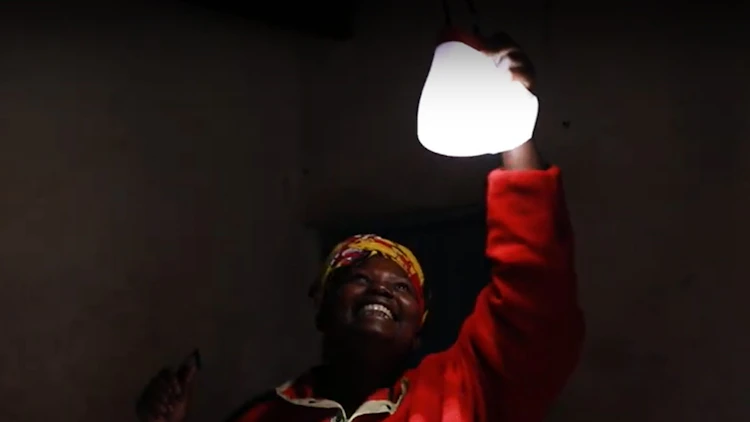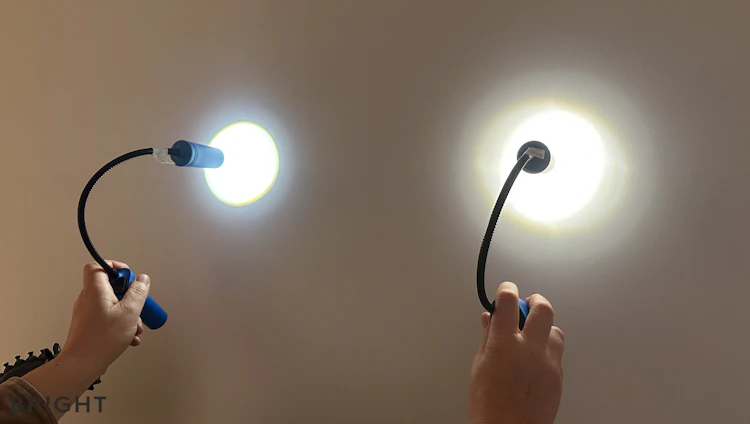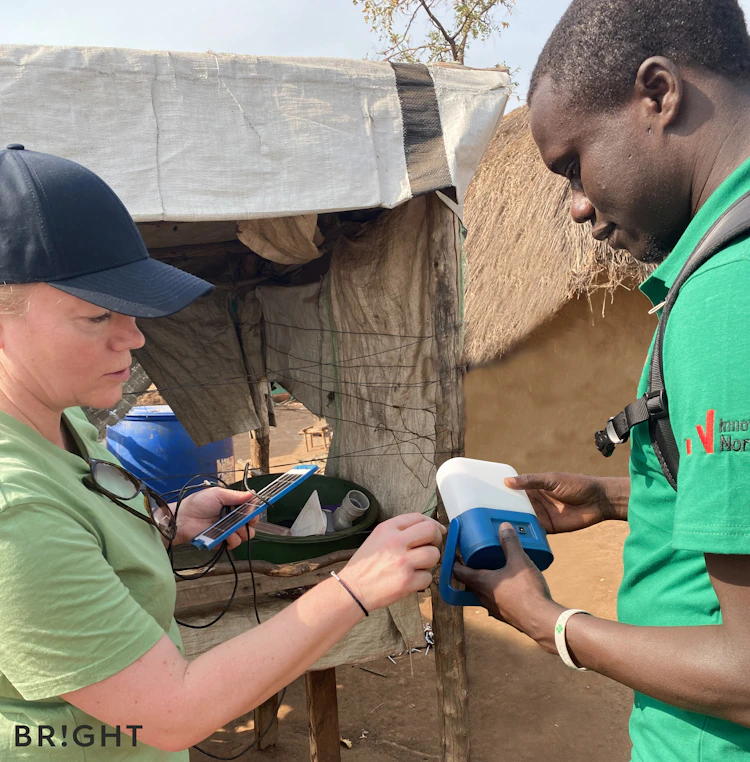
Lighting the way: How BRIGHT designs solar lamps for comfort, efficiency & real-world use
Since 2014, BRIGHT has been at the forefront of solar lighting innovation, designing and delivering sustainable solar lamps to support off-grid communities, humanitarian aid missions, and disaster response scenarios. We have delivered over 4 million lamps and illuminated more than 17 million lives, enhancing safety, supporting education, and preserving dignity in diverse settings. Behind every lamp we create lies a critical design philosophy: real-world use must shape technical choices. The light emitting diodes (LEDs) in our solar lights are meticulously engineered to provide optimal brightness and appropriate colour temperature. In this article, we explain how we choose brightness and colour temperature in our solar lamps, and why those decisions matter for the people we serve.
The science behind brightness and colour temperature
BRIGHT solar lamps use light-emitting diodes (LEDs) to deliver reliable and energy-efficient light. Two key technical characteristics define a lamp’s quality:
- Brightness, measured in lumens (lm), indicates the total amount of visible light emitted. Higher lumens mean a brighter lamp.
- Colour temperature, measured in Kelvin (K), determines the appearance of light:
- 2000K–3000K: warm, yellow-red light (like candlelight)
- 3500K–4500K: neutral white, balancing warm and cool tones
- 5000K–6500K: cool, bluish-white, similar to daylight
Understanding these properties helps us design lighting solutions that are both functional and comfortable.

Balancing performance with user comfort
BRIGHT solar lamps typically operate between 1.5 and 300 lumens, with colour temperatures ranging from 4000K to 6000K. These ranges aren't arbitrary, they result from extensive field testing and user feedback.
Line Iren Andersen, Head of Research and Development and Manufacturing at BRIGHT, explains that design decisions are shaped by customer requirements, regional preferences, and broader market trends.
For example, 4000K was a requirement from the UNHCR, while 5500K to 6000K is generally preferred by consumer markets. Yet, overly blue light can cause eye strain, especially in darker environments. That’s why we are standardising our product line around 4000K, a neutral white that works across settings and demographics.
Regional preferences also play a role:
- In Scandinavia, people tend to favour warmer tones to counter long, dark winters.
- In the Middle East, Asia, and parts of Africa, cooler light is often preferred for its clarity and perceived brightness.
This user-first approach also helps us differentiate from industry norms, where many manufacturers default to high-Kelvin specs. We believe comfort and context should outweigh convention.

Why lower lumens make sense in the field
The solar lighting industry often markets maximum brightness, but we’ve learned that more isn’t always better.
During field tests in Uganda’s Bidibidi refugee camp, users of our SunBell and Sol models overwhelmingly favoured the lowest or second-lowest brightness settings. Why? Because:
- Lower brightness conserves battery life, especially during cloudy weather
- Softer light supports restful sleep and caring for infants
- Subtle lighting allows visibility of hazards (like scorpions) without harsh glare
Technical constraints matter too, cramming LEDs too tightly can reduce light quality and increase flickering. Instead of chasing lumen highs, we focus on adaptable, efficient lighting that meets people where they are. This means prioritising battery efficiency, runtime, and practical features like an emergency blinking light over maximum brightness.
Practical innovations driven by user feedback
Many of BRIGHT’s best features were born in the field, not the lab. One key partner once required:
- A six-hour runtime at maximum brightness
- An emergency blinking light mode
Today, these are standard features across our product range.
Line points out that BRIGHT is currently exploring:
- Red light functionality, ideal for night vision and mosquito-prone areas
- Expanded use of reflectors (already used in the SunTurtle, SunBell, and Move) to increase perceived brightness without draining more power
Designing for real use cases
Lighting isn’t one-size-fits-all. Each lamp must serve a clear, user-driven purpose. “It’s crucial to differentiate the use case of each lamp. A headlamp or task light serves a different purpose than a lantern for a room or tent,” Line explains.
Even within the same household, preferences vary. Line shares how her 5-year-old son loves the SunBell for its gentle, focused beam while drawing; uses the Sol as a nightlight because of its ambient glow on low-settings; and dislikes the Move , which he says feels too bright, even at its lowest setting (20 lm).
This insight reinforces a key design principle: a wide but controlled lumen range, often starting as low as 2–3 lumens, is more valuable than extreme brightness.
“I envision a product line where every lamp has an intuitive interface, a practical brightness range, and lightweight, durable construction tailored for its primary use,” says Line.
Lighting designed around lives
By grounding our engineering decisions in real-world insights and human needs, we ensure BRIGHT solar lamps bring comfort, safety, and dignity to the communities we serve. As we continue to innovate, BRIGHT remains committed to thoughtful, user-first design choices that put people’s well-being before industry trends.
Explore our sustainable solar lamp solutions, learn more about our design process, or get in touch to discuss partnerships that make a difference.